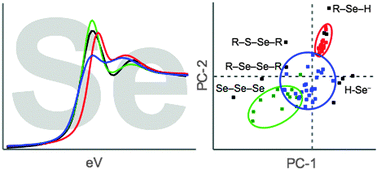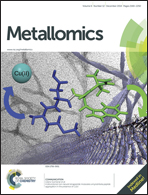XAS studies of Se speciation in selenite-fed rats†
Abstract
The biological activity of selenium is dependent on its chemical form. Therefore, knowledge of Se chemistry in vivo is required for efficacious use of selenium compounds in disease prevention and treatment. Using X-ray absorption spectroscopy, Se speciation in the kidney, liver, heart, spleen, testis and red blood cells of rats fed control (∼0.3 ppm Se) or selenite-supplemented (1 ppm or 5 ppm Se) diets for 3 or 6 weeks, was investigated. X-ray absorption spectroscopy revealed the presence of Se–Se and Se–C species in the kidney and liver, and Se–S species in the kidney, but not the liver. X-ray absorption near edge structure (XANES) spectra showed that there was variation in speciation in the liver and kidneys, but Se speciation was much more uniform in the remaining organs. Using principal component analysis (PCA) to interpret the Se K-edge X-ray absorption spectra, we were able to directly compare the speciation of Se in two different models of selenite metabolism – human lung cancer cells and rat tissues. The effects of Se dose, tissue type and duration of diet on selenium speciation in rat tissues were investigated, and a relationship between the duration of the diet (3 weeks versus 6 weeks) and selenium speciation was observed.



 Please wait while we load your content...
Please wait while we load your content...